
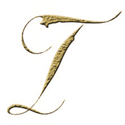 RANSFORMATION.
RANSFORMATION.
Dean Galloway heard it happen, and so he didn’t need to see it.
Across the desk from him, Langdon and Katherine were dead silent, no doubt staring in mute astonishment at the stone cube, which had just transformed itself loudly before their very eyes.
Galloway couldn’t help but smile. He had anticipated the result, and although he still had no idea how this development would ultimately help them solve the riddle of the pyramid, he was enjoying the rare chance to teach a Harvard symbologist something about symbols.
“Professor,” the dean said, “few people realize that the Masons venerate the shape of the cube—or ashlar, as we call it—because it is a three-dimensional representation of another symbol … a much older, two-dimensional symbol.” Galloway didn’t need to ask if the professor recognized the ancient symbol now lying before them on the desk. It was one of the most famous symbols in the world.
Robert Langdon’s thoughts churned as he stared at the transformed box on the desk in front of him. I had no idea …
Moments ago, he had reached into the stone box, grasped the Masonic ring, and gently turned it. As he rotated the ring through thirty-three degrees, the cube had suddenly changed before his eyes. The square panels that made up the sides of the box fell away from one another as their hidden hinges released. The box collapsed all at once, its side panels and lid falling outward, slapping loudly on the desk.
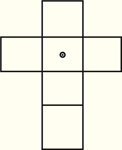
The cube becomes a cross, Langdon thought. Symbolic alchemy.
Katherine looked bewildered by the sight of the collapsed cube. “The Masonic Pyramid relates to … Christianity?”
For a moment, Langdon had wondered the same thing. After all, the Christian crucifix was a respected symbol within the Masons, and certainly there were plenty of Christian Masons. However, Masons were also Jews, Muslims, Buddhists, Hindus, and those who had no name for their God. The presence of an exclusively Christian symbol seemed restrictive. Then the true meaning of this symbol had dawned on him.
“It’s not a crucifix,” Langdon said, standing up now. “The cross with the circumpunct in the middle is a binary symbol—two symbols fused to create one.”
“What are you saying?” Katherine’s eyes followed him as he paced the room.
“The cross,” Langdon said, “was not a Christian symbol until the fourth century. Long before that, it was used by the Egyptians to represent the intersection of two dimensions—the human and the celestial. As above, so below. It was a visual representation of the juncture where man and God become one.”
“Okay.”
“The circumpunct,” Langdon said, “we already know has many meanings—one of its most esoteric being the rose, the alchemical symbol for perfection. But, when you place a rose on the center of a cross, you create another symbol entirely—the Rose Cross.”
Galloway reclined in his chair, smiling. “My, my. Now you’re cooking.”
Katherine stood now, too. “What am I missing?”
“The Rose Cross,” Langdon explained, “is a common symbol in Freemasonry. In fact, one of the degrees of the Scottish Rite is called ‘Knights of the Rose Cross’ and honors the early Rosicrucians, who contributed to Masonic mystical philosophy.
Peter may have mentioned the Rosicrucians to you. Dozens of great scientists were members—John Dee, Elias Ashmole, Robert Fludd—”
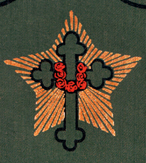
THE ROSE CROSS
85.1: Charles Walker/Topfoto /The Image Works (detail)
“Absolutely,” Katherine said. “I’ve read all of the Rosicrucian manifestos in my research.”
Every scientist should, Langdon thought. The Order of the Rose Cross—or more formally the Ancient and Mystical Order Rosae Crucis—had an enigmatic history that had greatly influenced science and closely paralleled the legend of the Ancient Mysteries … early sages possessing secret wisdom that was passed down through the ages and studied by only the brightest minds. Admittedly, history’s list of famous Rosicrucians was a who’s who of European Renaissance luminaries: Paracelsus, Bacon, Fludd, Descartes, Pascal, Spinoza, Newton, Leibniz.
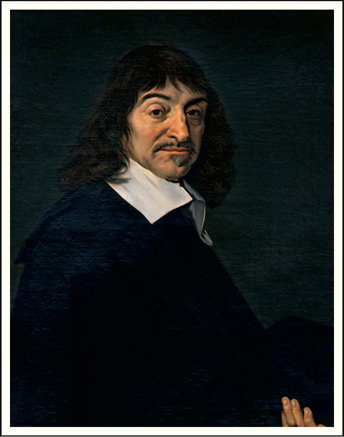
RENÉ DESCARTES
85.2: Louvre, Paris, France/Giraudon/The Bridgeman Art Library
According to Rosicrucian doctrine, the order was “built on esoteric truths of the ancient past,” truths which had to be “concealed from the average man” and which promised great insight into “the spiritual realm.” The brotherhood’s symbol had blossomed over the years into a flowering rose on an ornate cross, but it had begun as a more modest dotted circle on an unadorned cross—the simplest manifestation of the rose on the simplest manifestation of the cross.
“Peter and I often discuss Rosicrucian philosophy,” Galloway told Katherine.
As the dean began outlining the interrelationship between Masonry and Rosicrucianism, Langdon felt his attention drawn back to the same nagging thought he’d had all night. Jeova Sanctus Unus. This phrase is linked to alchemy somehow. He still could not remember exactly what Peter had told him about the phrase, but for some reason, the mention of Rosicrucianism seemed to have rekindled the thought. Think, Robert!
“The Rosicrucian founder,” Galloway was saying, “was allegedly a German mystic who went by the name Christian Rosenkreuz—a pseudonym obviously, perhaps even for Francis Bacon, who some historians believe founded the group himself, although there is no proof of—”
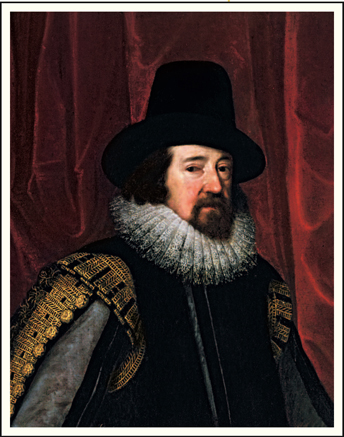
FRANCIS BACON
85.3: Private Collection/The Bridgeman Art Library
“A pseudonym!” Langdon declared suddenly, startling even himself. “That’s it! Jeova Sanctus Unus! It’s a pseudonym!”
“What are you talking about?” Katherine demanded.
Langdon’s pulse had quickened now. “All night, I’ve been trying to remember what Peter told me about Jeova Sanctus Unus and its relationship to alchemy. Finally I remembered! It’s not about alchemy so much as about an alchemist! A very famous alchemist!”
Galloway chuckled. “It’s about time, Professor. I mentioned his name twice and also the word pseudonym.”
Langdon stared at the old dean. “You knew?”
“Well, I had my suspicions when you told me the engraving said Jeova Sanctus Unus and had been decrypted using Dürer’s alchemical magic square, but when you found the Rose Cross, I was certain. As you probably know, the personal papers of the scientist in question included a very heavily annotated copy of the Rosicrucian manifestos.”
“Who?” Katherine asked.
“One of the world’s greatest scientists!” Langdon replied. “He was an alchemist, a member of the Royal Society of London, a Rosicrucian, and he signed some of his most secretive science papers with a pseudonym—‘Jeova Sanctus Unus’!”
“One True God?” Katherine said. “Modest guy.”
“Brilliant guy, actually,” Galloway corrected. “He signed his name that way because, like the ancient Adepts, he understood himself as divine. In addition, because the sixteen letters in Jeova Sanctus Unus could be rearranged to spell his name in Latin, making it a perfect pseudonym.”
Katherine now looked puzzled. “Jeova Sanctus Unus is an anagram of a famous alchemist’s name in Latin?”
Langdon grabbed a piece of paper and pencil off the dean’s desk, writing as he talked. “Latin interchanges the letters J for I and the letter V for U, which means Jeova Sanctus Unus can actually be perfectly rearranged to spell this man’s name.”
Langdon wrote down sixteen letters: Isaacus Neutonuus.
He handed the slip of paper to Katherine and said, “I think you’ve heard of him.”
“Isaac Newton?” Katherine demanded, looking at the paper. “That’s what the engraving on the pyramid was trying to tell us!”
For a moment, Langdon was back in Westminster Abbey, standing at Newton’s pyramidical tomb, where he had experienced a similar epiphany. And tonight, the great scientist surfaces again. It was no coincidence, of course … the pyramids, mysteries, science, hidden knowledge … it was all intertwined. Newton’s name had always been a recurring guidepost for those seeking secret knowledge.
“Isaac Newton,” Galloway said, “must have something to do with how to decipher the meaning of the pyramid. I can’t imagine what it would be, but—”
“Genius!” Katherine exclaimed, her eyes going wide. “That’s how we transform the pyramid!”
“You understand?” Langdon said.
“Yes!” she said. “I can’t believe we didn’t see it! It has been staring us right in the face. A simple alchemical process. I can transform this pyramid using basic science! Newtonian science!”
Langdon strained to understand.
“Dean Galloway,” Katherine said. “If you read the ring, it says—”
“Stop!” The old dean suddenly raised his finger in the air and motioned for silence. Gently, he cocked his head to the side, as if he were listening to something. After a moment, he stood up abruptly. “My friends, this pyramid obviously has secrets left to reveal. I don’t know what Ms. Solomon is getting at, but if she knows your next step, then I have played my role. Pack up your things and say no more to me. Leave me in darkness for the moment. I would prefer to have no information to share should our visitors try to force me.”
“Visitors?” Katherine said, listening. “I don’t hear anyone.”
“You will,” Galloway said, heading for the door. “Hurry.”
Across town, a cell tower was attempting to contact a phone that lay in pieces on Massachusetts Avenue. Finding no signal, it redirected the call to voice mail.
“Robert!” Warren Bellamy’s panicked voice shouted. “Where are you?! Call me! Something terrible is happening!”
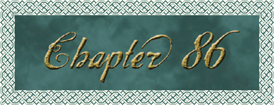
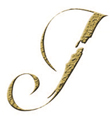 N THE cerulean glow of his basement lights, Mal’akh stood at the stone table and continued his preparations. As he worked, his empty stomach growled. He paid no heed. His days of servitude to the whims of his flesh were behind him. Transformation requires sacrifice.
N THE cerulean glow of his basement lights, Mal’akh stood at the stone table and continued his preparations. As he worked, his empty stomach growled. He paid no heed. His days of servitude to the whims of his flesh were behind him. Transformation requires sacrifice.
Like many of history’s most spiritually evolved men, Mal’akh had committed to his path by making the noblest of flesh sacrifices. Castration had been less painful than he had imagined. And, he had learned, far more common. Every year, thousands of men underwent surgical gelding—orchiectomy, as the process was known—their motivations ranging from transgender issues, to curbing sexual addictions, to deep-seated spiritual beliefs. For Mal’akh, the reasons were of the highest nature. Like the mythological self-castrated Attis, Mal’akh knew that achieving immortality required a clean break with the material world of male and female.
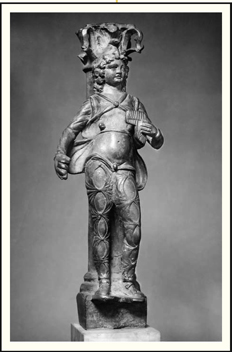
ATTIS
86.1: Alinari Archives/The Image Works
The androgyne is one.
Nowadays, eunuchs were shunned, although the ancients understood the inherent power of this transmutational sacrifice. Even the early Christians had heard Jesus Himself extol its virtues in Matthew 19:12: “There are those who have made themselves eunuchs for the sake of the kingdom of heaven. He who is able to accept this, let him accept it.”
Peter Solomon had made a flesh sacrifice, although a single hand was a small price in the grand scheme. By night’s end, however, Solomon would be sacrificing much, much more.
In order to create, I must destroy.
Such was the nature of polarity.
Peter Solomon, of course, deserved the fate that awaited him tonight. It would be a fitting end. Long ago, he had played the pivotal role in Mal’akh’s mortal life path. For this reason, Peter had been chosen to play the pivotal role in Mal’akh’s great transformation. This man had earned all the horror and pain he was about to endure. Peter Solomon was not the man the world believed he was. He sacrificed his own son.
Peter Solomon had once presented his son, Zachary, with an impossible choice—wealth or wisdom. Zachary chose poorly. The boy’s decision had begun a chain of events that eventually dragged the young man into the depths of hell. Soganlik Prison. Zachary Solomon had died in that Turkish prison. The whole world knew the story … but what they didn’t know was that Peter Solomon could have saved his son.
I was there, Mal’akh thought. I heard it all.
Mal’akh had never forgotten that night. Solomon’s brutal decision had meant the end of his son, Zach, but it had been the birth of Mal’akh.
Some must die that others may live.
As the light over Mal’akh’s head began changing color again, he realized the hour was late. He completed his preparations and headed back up the ramp. It was time to attend to matters of the mortal world.